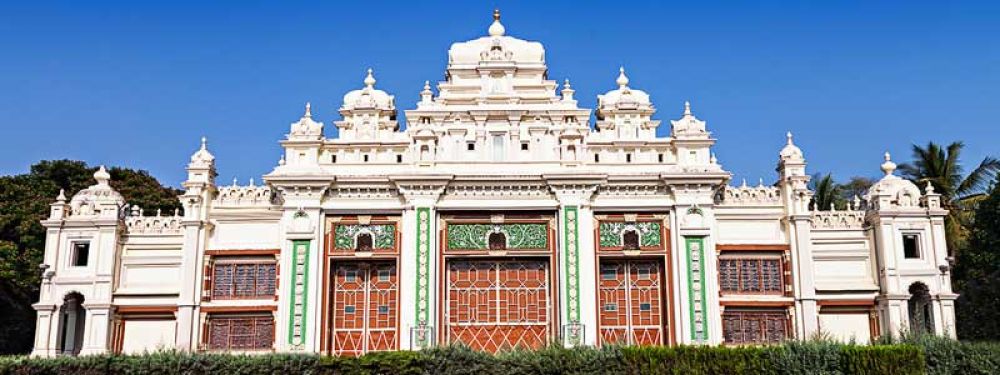

The Jaganmohan Palace Art Gallery and Auditorium in Mysore (Mysuru), Karnataka, India, is a historic building that has played a significant role in the evolution of tourism in the region. Originally built in 1861 by the royal family of Mysore as an alternate retreat for the royal household, the palace has been witness to myriad historic events that have shaped the city's cultural landscape.
The transformation of Jaganmohan Palace into a center for tourism began earnestly in 1915 when the palace was converted into an art gallery. It was intended to house the exquisite collection of paintings and artifacts owned by the Wodeyars, the ruling family of Mysore. Over the years, tourists began flocking to Mysore to witness the grandeur of the city's palaces and to get a glimpse of its royal heritage.
The Jaganmohan Art Gallery became a pivotal tourist destination within Mysore for several reasons. Firstly, it hosts some of the finest collections of Indian art, including works by Raja Ravi Varma. Secondly, it showcases traditional Mysore Gold Leaf paintings, which have become synonymous with the city’s art tradition. Thirdly, the palace itself is an architectural marvel, blending Hindu, Islamic, Gothic and Rajput styles – reflecting the pluralistic culture of Mysore.
In recent years, Mysore has seen an increase in cultural tourism, with the Jaganmohan Palace Art Gallery and Auditorium becoming a hotbed for events, exhibitions, and cultural performances. There is an emerging trend of experience-based tourism where visitors are not just passive spectators but actively engage with Mysore’s rich history through interactive exhibits and multimedia displays within the art gallery.
Concerts and performances held at the auditorium part of the palace also draw in both locals and tourists, who are keen to experience the cultural vibe of the city. The events are often traditional in nature, including classical music concerts, dance performances, and drama, connecting visitors with the cultural essence of Karnataka.
Sustainability in tourism is another trend gaining momentum. Efforts are being made to ensure that the impact of tourism does not affect the integrity of the historic sites. The visitor experience is crafted to preserve and respect the palace’s history and aesthetics, while also catering to the educational and cultural curiosity of the tourists.
Moreover, the rise of digital and social media has also enabled virtual tours and online galleries, which serve to spark interest among potential tourists, making the Jaganmohan Palace Art Gallery and Auditorium accessible to a global audience and helping with pre-visit engagement.
In conclusion, the Jaganmohan Palace Art Gallery and Auditorium is a testament to Mysore’s commitment to preserving its royal legacy while embracing modern tourism trends. As tourism evolves, this historic site continues to adapt, offering a rich blend of history, art, and culture to the curious traveler.